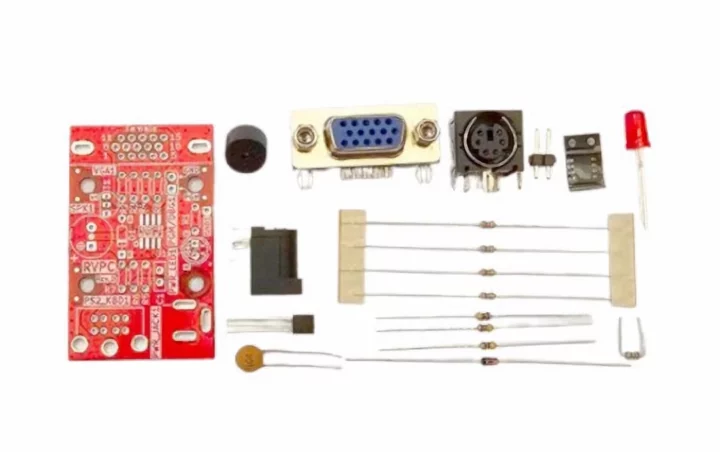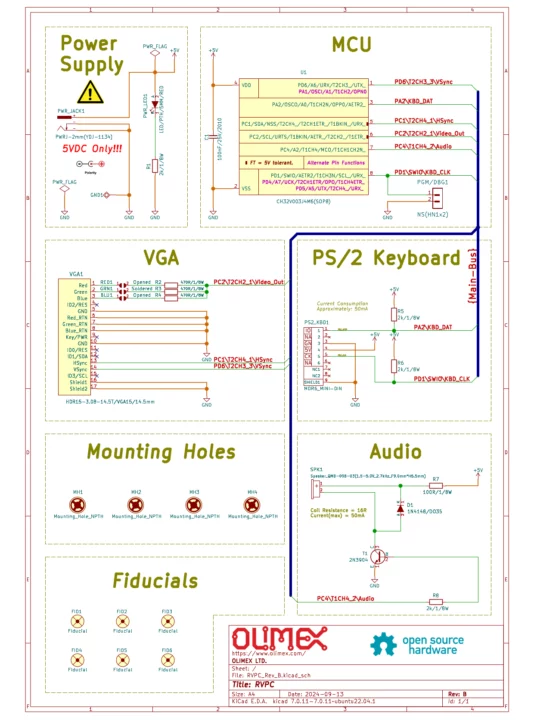Olimex RVPC is one Euro RISC-V computer powered by a WCH CH32V003 RISC-V microcontroller and equipped with a VGA port for video output and a PS/2 connector to connect a keyboard.
You won’t be able to do much with this device as an end-user, but it does not matter since the RVPC open-source hardware board mostly targets the education market and is offered as a kit to be soldered to lower the selling price and to serve as a soldering learning kit.
Olimex RVPC specifications:
- MCU – WCH CH32V003 32-bit RISC-V2A microcontroller up to 48 MHz with 2KB SRAM, 16KB flash (SOP8 package with 6x GPIOs)
- Video Output – VGA connector (3x GPIO used for Vsync, HSync, and RGB)
- Keyboard port – PS/2 connector (2x GPIO used)
- Programmer port – 2-pin header for CH32V003 programming through a board such as ESP32-S2-DevKit-LiPo-USB
- Misc – Buzzer (1x GPIO) and Red power LED
- Power Supply – 5V via power barrel jack
- Dimensions – 50 x 30 mm
- OSHWA certification – BG000142

Programming can be done through PlatformIO IDE and an ESP32-S2-DevKit-LiPo-USB acting as a programmer. Olimex provides several C code samples for VGA output, the audio buzzer, a Tetris demo, a terminal emulator (RVMON) that’s preloaded to the MCU’s flash by default, and more. You’ll find all resources for the board including KiCad hardware design files, code samples, and some documentation on GitHub.
Olimex RVPC “One Euro RISC-V computer” can be pre-ordered on the company’s website at the advertised one Euro price tag plus shipping. Deliveries are scheduled to start on October 4th onwards.


Jean-Luc started CNX Software in 2010 as a part-time endeavor, before quitting his job as a software engineering manager, and starting to write daily news, and reviews full time later in 2011.
Support CNX Software! Donate via cryptocurrencies, become a Patron on Patreon, or purchase goods on Amazon or Aliexpress





